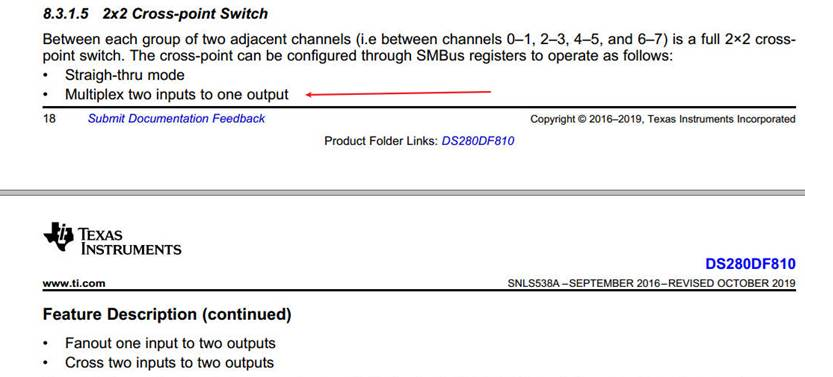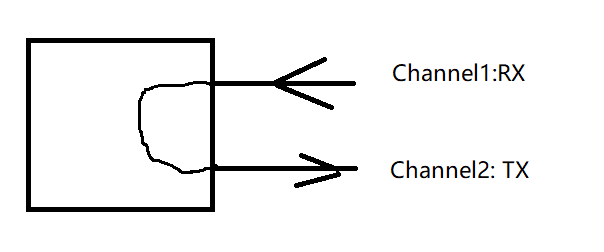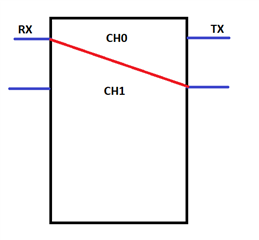Other Parts Discussed in Thread: DS560DF810, DS560DF410, DS280MB810, DS280BR810, DS110DF410, DS110DF111, DS125DF111
Dear team,
I have several questions about DS280DF810 that need your support. The questions are shown below:
1. The datasheet mentioned that each channel can lock serial data rates from 20.2 Gbps to 28.4 Gbps, can DS280DF810 support PAM4 56G?
2. The datasheet mentioned that 2 x 2 Cross-point switch can be figured through SMBus registers to operate as "Multiplex two inputs to one output", the screenshot is shown below:

How "The two inputs to one output" works? Does it mean merge the two inputs to one output with the data rates doubled or choose one input to one output directly? If it means that choose one input to output, then can it support switching input channel A to input channel B and then to output channel only by operating registers without shutting down the power?
3. Does the "Mux/Fanout" function let the two output channels output the same signal with the one input channel?

Really appreciate your help and support!
I'm looking forward to your reply~
Best regards,
Xenon Li




